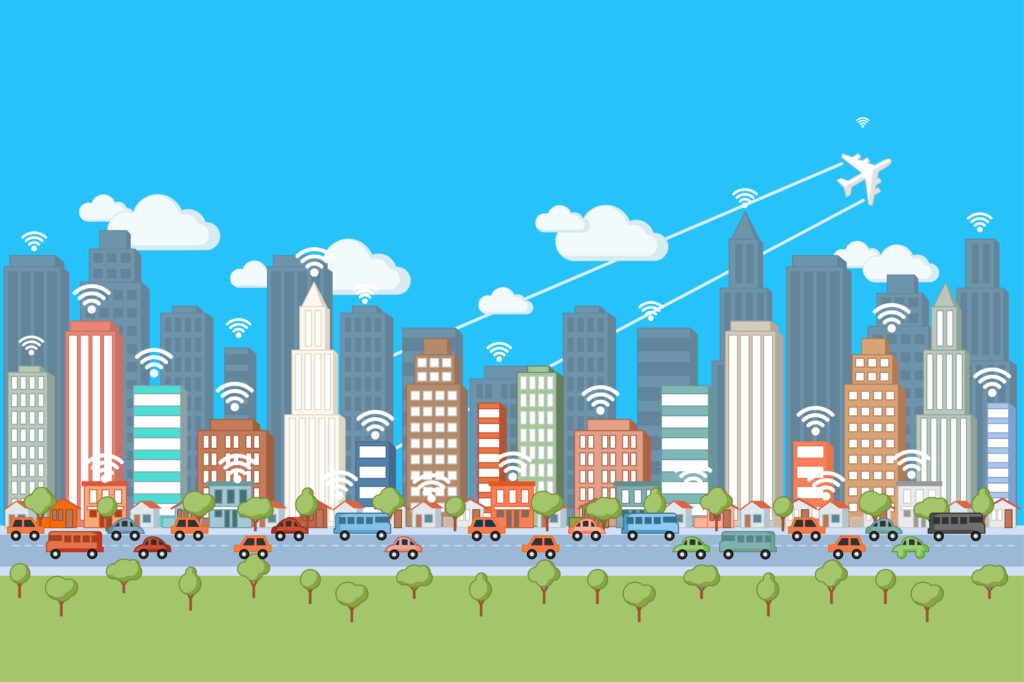Back in the days, some of the technological advancements that exist today were once just fictional gadgets used in futuristic movies. As a matter of fact, most people in the past thought that Smart Cities can only exist in someone’s imagination. But because of the innovative minds that stepped up along the way, they were able to prove the skeptics otherwise.
Fiber optic technology was the game changer in the infrastructure development of the 21st century. With its help, the fictional Smart Cities started to exist—and it changed the world’s quality of living in so many ways. But before discussing further how fiber optics made Smart Cities into a reality, there are certain things you need to understand first.
What Is a Smart City?
Although there is no fixed definition of what a Smart City is, it usually pertains to a metropolis where information and communications technology are used to run the entirety of the city. According to accredited fiber optic technicians, fiber technology is a key ingredient in building these Smart Cities. With its aid, the world will be able to take a step closer to creating a more efficient, sustainable, and eco-friendly living space. Because of this, many citizens considered Smart Cities as the city of the future.
Role of Fiber Optic Technology in Building Smart Cities

Now that you understand what a Smart City is, let’s delve into detail on the role that fiber optics play in building these cities. As you can see, every urban infrastructure nowadays requires interconnected technologies in order to communicate, analyze and transfer information. With the power of fiber optics in your hands, this can be achieved easily.
Over the years, it has been evident how high-speed fiber networks enabled its users to transport large volumes of data into cloud-based systems. In order to discuss further regarding this matter, here are some of the reasons why fiber optics is essential in Smart Cities:
-
Surveillance and Security
In a time where safety and security are few of the many priorities of a city, the need for video surveillance is growing more than ever. Throughout the years, surveillance systems have proven itself to be an effective crime deterrent all around the world. With fiber optics, Smart Cities are able to provide city-wide surveillance cameras that require high data transmitting speed. Hence, helping them improve the safety and security of its residents.
-
Traffic Congestion Control
One of the greatest challenges that big cities usually face is traffic congestion. When the traffic is not controlled immediately, it can affect its citizens’ quality of life. That’s why it’s important to have traffic lights, message signs, and other traffic systems technologies. In Smart Cities, fiber optics enable its citizens to enjoy the aid of complex networks that control the sensors of the mentioned traffic systems. That said, fiber technology is a great help when it comes to traffic control and monitoring.
-
The Rise of Smart Buildings
Alongside the rise of technological advancements, is the development of smart buildings all over the world. When you take a look at these buildings, you will see that they have fiber optic technology installed on its premises. With its help, these smart buildings are able to connect to city facilities such as telecommunications services, climate control and lighting systems without problems.
List of Smart City Services That Need the Power of Fiber Optics

Apart from playing a significant role in the formation of Smart Cities, fiber optic technology also affects the execution of services within the city. Over the past few years, it has been well-known in the field of fiber optics that the cities that wield its power gain the ability to deliver numerous services to its residents. For this reason, more and more Smart Cities are now turning to fiber optics to improve the services that they offer.
Few of these services are the ones listed below:
-
Communications Services
Evidently, fiber driven communications are vital for Smart Cities’ public and commercial services. Without it, these cities won’t be able to provide high-quality communications services to its residents. Because of this, it became a normal scenario for Smart Cities to embrace new technology like small cells and Distributed Antenna Systems (DAS).
-
Smart Lightings
Aside from improving the city’s communications services, fiber optics also has the capacity to make the installation of smart lightings easier. In most Smart Cities, smart lightings often take the form of smart street lights that utilize small cell wireless antennas LED lighting. Not only does this provide cities the light it needs to illuminate its darkness, but it also gives them good cellular service. That said, numerous Smart Cities find fiber optics helpful in this matter.
-
Transportation
As mentioned earlier, fiber optics play a significant role in traffic control. With its help, the government will be able to facilitate smart traffic signals and monitor traffic smoothly. That said, it is undeniably a great tool that cities can use to improve their transportation services.
-
Educational Services
The assistance that fiber technologies provide to Smart Cities empowers teachers and students to work with modernized technology. It is undeniable how this training maximizes the students’ educational experience. Hence, it is definitely a great way to prepare students to work for high-tech companies in the near future.
-
Public Services
With the help of fiber optic technology, the task of monitoring and controlling public utilities such as electricity, sewage, and gas becomes a simpler task. That said, this innovation enables Smart Cities to deliver their public services in a more efficient and economical way.
-
Business Support
Over the years, it has been evident how high-speed fiber optic internet has the capacity to help companies go a long way in the field of business. As a matter of fact, that’s the exact reason why many entities are enticed to install fiber optics in their respective establishments. With that said, Smart Cities need to integrate a business base that’s healthy and scalable in order to create progress in their economy.
Network Considerations for Smart City Plans
It is as clear as day how Smart Cities reap numerous benefits from the installation of fiber optic technology. With its power, government bodies are able to create a connected digital ecosystem that allows them to coordinate their services and utilities across multiple cities. For this exact reason, Smart Cities became a rising vision for most municipal governments in the world.
Without a doubt, the advantages mentioned above are definitely true. But just like everything else, there are certain issues that municipal governments need to consider in order for them to ensure their network’s effectivity in delivering its services.
To expound about this, here are two network concerns that you need to look into during the formulation of your Smart City’s network plans:
-
The Need for Backhaul Networks
When it comes to Smart Cities, it has been prevalent that wireless networking is a vital part of its operations—and fiber optic technology is the ideal material for these network runs.
As you can see, it’s unrealistic to run cables out to sensors and other devices all around your city. Hence, it has been recommended by experts that the government should make use of a fast and secure Wi-Fi connection like the one that fiber optics can deliver. As you do this, it’s essential that you take note that wireless networks are impossible to acquire without the right amount of backhaul networks installed. Aside from allowing the city to install shorter cable runs for traffic lights, surveillance cameras, and other similar assets, these networks also enable the residents to interact with some city systems. That said, it undeniable how the fiber optics is suitable for Smart City backhaul networks.
-
Assurance of Network Resilience
If you want to ensure that your Smart City’s fiber-optic network will serve your city for a long time, it’s fundamental that you work on its endurance. One way to do this is by putting your cables, connectors, switches, routers and other network devices in an enclosed controlled environment. Although this doesn’t change the fact that it’s difficult to deploy power sources, cooling units, and heating units for every hardware you have, it enables you to protect your network from tampering. Hence, it is undeniable how important it is to improve your network’s resilience towards vibrations, extreme temperatures, and other conditions that can compromise stable data transit.
As shown by these network concerns, forward-thinking hardware strategies are necessary in order to make the most of fiber optic technology in your Smart City. As long as you think ahead before you deploy network components, your city will be able to deliver functionalities that are flexible and resilient to environmental conditions.
If you want to make well-informed decisions during your Smart City planning, it’s best if you seek the help of certified fiber optic technicians from reputable companies like Nexus-net. With their expertise, you’ll be able to increase your network’s reliability and minimize your maintenance expenses while you make your Smart City vision into a reality.



